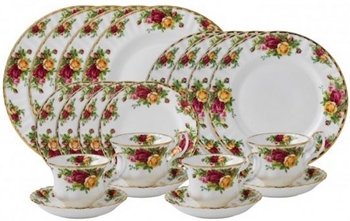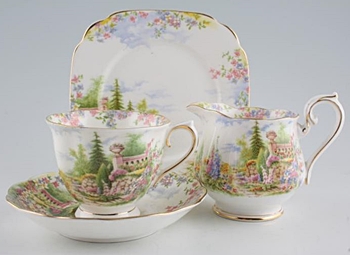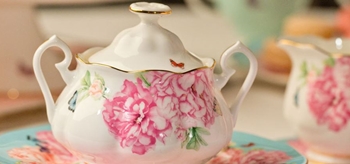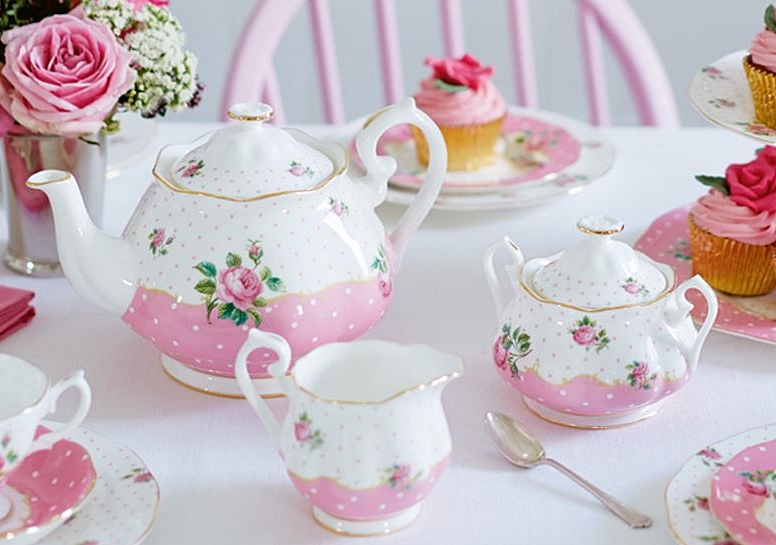 The name Royal Albert brings to mind delicate tea cups that Victorians might have used. For a good reason: Victorians did use them.
The name Royal Albert brings to mind delicate tea cups that Victorians might have used. For a good reason: Victorians did use them.
If Thomas Wild and Co. wanted to win the favour of the upper British classes by naming their table and tea wares Royal Albert and by churning out commemorative pieces for Queen Victoria’s 1897 Diamond Jubilee, they succeeded. Practically from day one, everybody who was anybody in the British Empire swooned over the elegant shapes and had to have them.
 Fast forward more than a century and you will find that Royal Albert porcelain – or, to be more precise, bone-china – is still coveted.
Fast forward more than a century and you will find that Royal Albert porcelain – or, to be more precise, bone-china – is still coveted.
The company went through numerous transformations and changed several hands, but its floral patterns made in rich shades of red, green, and blue are as fresh as ever. Many Royal Albert patterns are inspired by English gardens and woodlands; one of the most popular is a relatively modern Old Country Roses, introduced in 1962. There are collectors who specialise in dishes with Old Country Roses pattern (OCR for short).
Another popular pattern among collectors is Kentish Rockery, manufactured between the 1930s and 1950s. It is a depiction of an English garden in fine detail.
Backstamps

If you have a collecting streak, you know how important it is to pay attention to the backstamp, placed on the underside of a piece of pottery, china or porcelain object. Backstamps are the identifying mark of the manufacturer and may be stamped, decaled, or cut (incised) into the piece. Here are the characteristics of Royal Albert backstamps over the years:
- Before 1904: a simple crown mark with the letters TCW underneath.
- Between 1905 and 1907: the words “Royal Albert Crown China” between concentric circles around a crown and sometimes the letters TCW or the pattern’s name.
- Between 1907 and 1922: the new circular logo had the crown on top and interlocking TCW letters on the inside. The letters TCW were dropped from the backstamp in 1925.
- From 1927: a variety of stylized backstamps made an appearance. Some of them incorporate the crown, Art Deco lettering, roses, etc.
The pieces that did not pass quality control due to imperfections in shape, colours or glazing are known as “seconds”. These used to be given to employees or sold at half price. Seconds can be identified by a scratch or mark across the backstamp.
Who’s more royal: Albert vs. Doulton
 The Albert brand got Royal Warrant (and the right to use the appellation Royal) in 1904 while the Doulton got theirs in 1901. However, in case you thought that there must be a fierce rivalry between the Royal Albert and the Royal Doulton houses, know that both these quintessentially English bone china makers are today owned by an international company of Finnish origins and are manufactured in England and elsewhere in the world, mainly in Indonesia and China.
The Albert brand got Royal Warrant (and the right to use the appellation Royal) in 1904 while the Doulton got theirs in 1901. However, in case you thought that there must be a fierce rivalry between the Royal Albert and the Royal Doulton houses, know that both these quintessentially English bone china makers are today owned by an international company of Finnish origins and are manufactured in England and elsewhere in the world, mainly in Indonesia and China.
Be that as it may, Royal Albert is among the most searched-for items on bidorbuy (so there, Doulton!).










